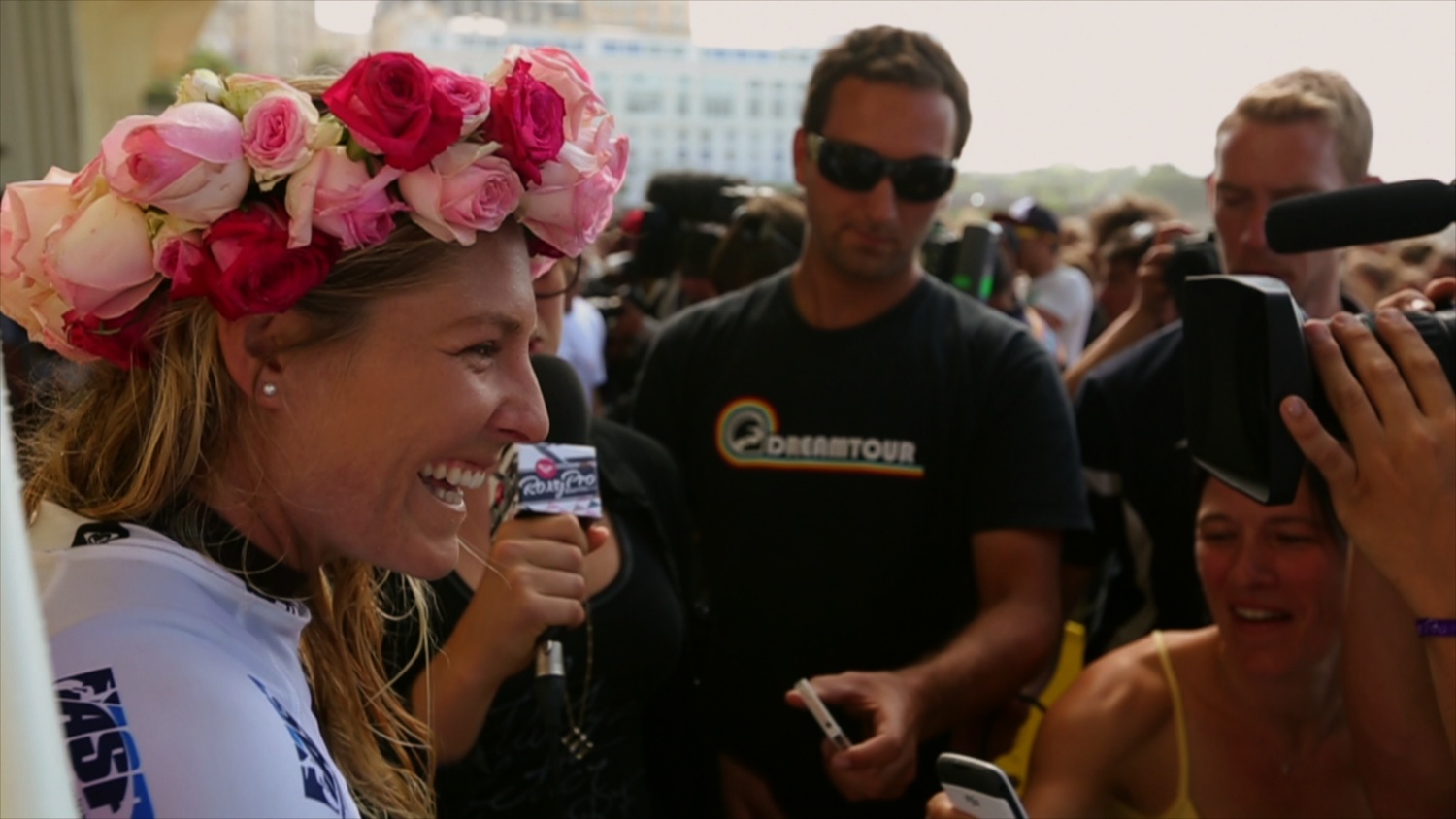By providing your information, you agree to our Terms of Use and our Privacy Policy. We use vendors that may also process your information to help provide our services. This site is protected by reCAPTCHA Enterprise and the Google Privacy Policy and Terms of Service apply.
Here’s How This First-Time Feature Director Found the Right ‘Star’ for Her Documentary

I had been living in New York for 10 years at the time, but grew up in Torquay, a small coastal town in Australia known for its surf breaks. My father is an aficionado of all things surf and a figure in the industry. He introduced me to Stephanie and we instantly began to exchange ideas and cross-reference our interests in art, music and film. We knew we had to work on a movie together and thus launched a multi-year creative dialogue. Stephanie has a specific and intuitive approach to the sport that I respected; a sport that is unique in that it balances nature and competition. I wanted to represent it on film, where I would be able to reexamine my familial heritage and learn from my subject. Working on “Stephanie in the Water” allowed me to fill in those blanks and bridge the gap between my artist life in New York City and my surf background in Australia.
READ MORE: Here’s Why Indie Filmmakers Need to Think Like Entrepreneurs
In art, people are often polarized by the slogan “make what you know”. Some say it is limiting and banal; but this phrase can be extrapolated and can inform the storytelling process. In “Stephanie In The Water,” I attempted to make what I knew, or at least, make use of what was available to me to gain access to what I wanted to know. I was able to connect with Stephanie on some shared knowledge of coastal Australia and surf culture, but also ask questions. The key counterpoint to this age-old phrase “make what you know” is where one can really become expansive; “make what you don’t know.” This is where the themes used for storytelling are bred. What questions do I have? What am I curious about? What can I learn? What can I say? There may be a level of access or basic understanding from what you know or what is familiar, but the magic occurs in the unknown.
 Navigating the documentary filmmaking process provided plenty of unknowns. The most compelling films are those that develop in ways we cannot anticipate. I wasn’t ever precisely sure where each frame we shot would lead me, but eventually I would identify cadence. In surfing you are dealing with a similar unmapped variable. The ocean is an unbridled power and a surfer has an opportunity to find rhythm with it. This balance between the external and the familiar was something we kept in mind during production.
Navigating the documentary filmmaking process provided plenty of unknowns. The most compelling films are those that develop in ways we cannot anticipate. I wasn’t ever precisely sure where each frame we shot would lead me, but eventually I would identify cadence. In surfing you are dealing with a similar unmapped variable. The ocean is an unbridled power and a surfer has an opportunity to find rhythm with it. This balance between the external and the familiar was something we kept in mind during production.
Once we started rolling, more questions about the life of a pro athlete arose and the potential for true narrative surfaced. Stephanie provided a wealth of material in her life and character. I mined my own experiences where I could, and shot Stephanie with spirit, subtlety and directorial discernment. As time went on, events in Stephanie’s personal story transpired that we could never have expected. Stephanie’s setbacks, her attack, and her injury were all caught on camera and pointed us towards sculpting a classic narrative arc. With my trusted editor Isabel Freeman we sifted through hours of footage, procuring our favorite shots and sequences.
The struggle faced as a first time documentary filmmaker was finding an appropriate conclusion on screen to something that had not in fact ended. Stephanie’s life as an athlete continues. Compelled towards narrative, we committed to emotional tones, illustrated themes and trusted they held water. “Stephanie in the Water” braids these threads to portray an athlete during a critical part of her career and explores material that, for me, was both familiar and uncharted.
Watch a trailer for “Stephanie in the Water” below:
Ava Warbrick is an Australian born, New York based artist and filmmaker. Warbrick’s short and experimental films have screened worldwide. Short “The Fear, Year of the Rat” and “The Keeper” were selections at numerous international shorts festivals. “Stephanie in the Water” is her first documentary feature. The film is available digitally by BOND/360. Find it on iTunes here or watch it here.
By providing your information, you agree to our Terms of Use and our Privacy Policy. We use vendors that may also process your information to help provide our services. This site is protected by reCAPTCHA Enterprise and the Google Privacy Policy and Terms of Service apply.















